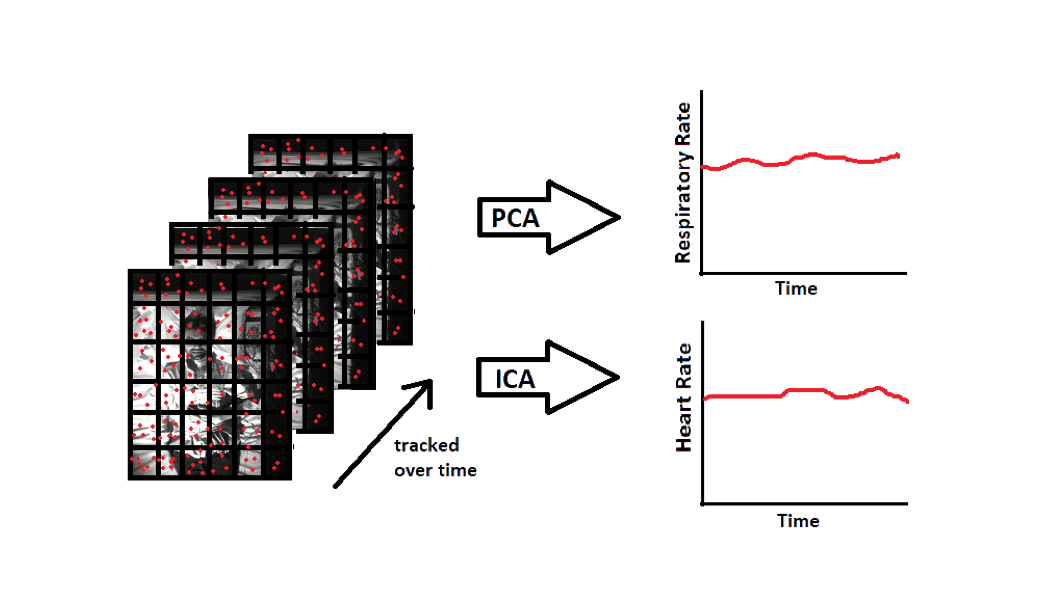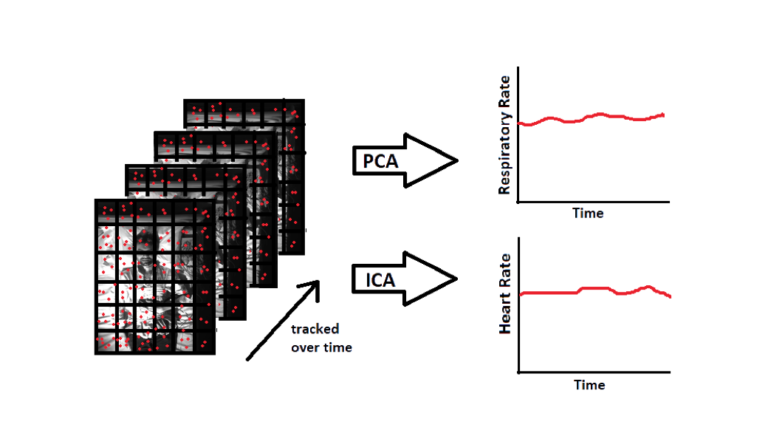<!–[CDATA[ Early Access Note:
Early Access articles are new content made available in advance of the final electronic or print versions and result from IEEE’s Preprint or Rapid Post processes. Preprint articles are peer-reviewed but not fully edited. Rapid Post articles are peer-reviewed and edited but not paginated. Both these types of Early Access articles are fully citable from the moment they appear in IEEE Xplore.

A reliable, accessible, and non-intrusive method for tracking respiratory and heart rate is important for improving monitoring and detection of sleep apnea. In this study, an algorithm based on motion analysis of infrared video recordings was validated in 50 adults referred for clinical overnight polysomnography (PSG). The algorithm tracks the displacements of selected feature points on each sleeping participant and extracts respiratory rate using principal component analysis and heart rate using independent component analysis. For respiratory rate estimation (mean ± standard deviation), 89.89 % ± 10.95 % of the overnight estimation was accurate within 1 breath per minute compared to the PSG-derived respiratory rate from the respiratory inductive plethysmography signal, with an average root mean square error (RMSE) of 2.10 ± 1.64 breaths per minute. For heart rate estimation, 77.97 % ± 18.91 % of the overnight estimation was within 5 beats per minute of the heart rate derived from the pulse oximetry signal from PSG, with mean RMSE of 7.47 ± 4.79 beats per minute. No significant difference in estimation of RMSE of either signal was found according to differences in body position, sleep stage, or amount of the body covered by blankets. This vision-based method may prove suitable for overnight, non-contact monitoring of respiratory rate. However, at present, heart rate monitoring is less reliable and will require further work to improve accuracy.]]>

